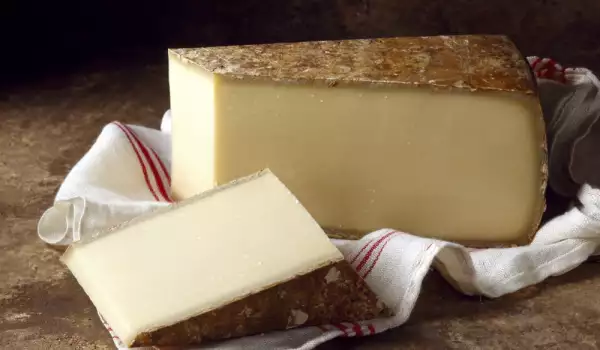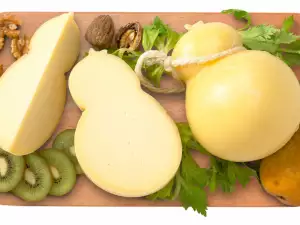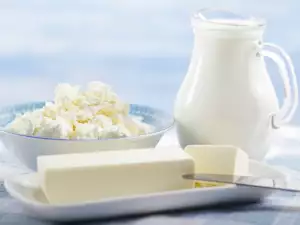Beaufort is a type of semi-hard cheese made from cow's milk in the French region of Savoie. Along with Camembert, Comte, Munster and Brie, it is among the most popular French cheeses. The product is not only on the list of the most famous cheeses but is also on the list of the most expensive ones. Fans of Beaufort liken it to Gruyère, which is traditional in Switzerland.
History of Beaufort
Beaufort is among the cheeses that have persisted in cuisine for centuries. We can look for its roots at the foot of the Alps. A precursor to it was initially made by local clerics and it is believed that they consulted recipes dating from Roman times.
During the Middle Ages, the method for the production of the cheese became more popular and went beyond the walls of the monasteries. In this way, several households now had access to the recipe. Its preparation became something completely natural for the farms there. In the 18th century, the cheese came to be known under the name "Vacherin", with this name coming from the French word for cow - vache.
The inspiration for the name is due to the fact that it's made from cow's milk. Almost a century later, the dairy product obtained its modern name Beaufort. It is believed that it was named after an English village, the surroundings in which it was being made.
But Beaufort's history does not end there. In the 2nd half of the past century, Beaufort became a cheese with a controlled designation of origin. It was given the label Appellation d'Origine Contrôlée–AOC which denotes the region it came from. Since then, by regulation, the cheese has only been produced in the Beaufortain, Tarentaise, Maurienne and Val d'Arly valleys.
Production of Beaufort
Beaufort is a cheese whose production requires raw cow's milk. An interesting fact - to make just 2 lb (1 kg) of the product, more than 22 lb (10 kg) of milk are needed.
Initially the milk substance is heated to 90°F (33°C). Then a starter culture is added to it and the bacteria Streptococcus thermophilus, Lactobacillus helveticus and Lactobacillus lactis are used. Once the milk curdles, the substance is heated once more, this time to at least 130°F (53°C). While heating, it is crucially important to stir nonstop so that any unnecessary moisture evaporates.

The next step is to place the resulting product onto linen cloths, attached to wooden rings. The cheese is put under a press for nearly an entire day. In that time, it is turned over multiple times and the cloths it is in are also changed. After Beaufort sits for a day, it is salted and placed in cellars to mature. Traditionally it is stored on wooden shelves crafted from spruce.
It takes 5 to 12 months for a cheese to fully mature. In rare cases, the dairy products are left to age for more than a year. But for the cheese to be stored in the cellars, special conditions need to be maintained. For example, the temperature in them needs to be no higher than 50°F (10°C). At the same time, humidity levels need to be high. When aging Beaufort cheese, it needs to be turned over twice a week and rubbed with salt.
Characteristics of Beaufort
Ready-to-eat Beaufort cheeses look a certain way. They are sold as flattened, cylindrical pitas, with an indented edge. Their diameter is usually between 13 3/4″ (35 cm) and 30″ (75 cm). They weight between 44 lb (20 kg) and 154 lb (70 kg).
They have a crust with a smooth, yellow-colored surface. The inside of the cheese is also smooth. It is further characterized by an elastic consistency and whitish color, akin to an elephant tusk. The aroma of this dairy product is enticing, associated with fruits. The taste is also nice, slightly salty.
Types of Beaufort
There exist several types of this cheese. It is classified depending on the conditions it is produced under and also on the weather. The so-called Beaufort de Savoie is well known. It is also known as plain Beaufort and is made year-round. Beaufort d’été or summer Beaufort is another variety.
As you may have guessed from the name, it is made during the summer, more specifically from July to October. French cheese experts also recognize Beaufort d’alpage, the Alpine Beaufort. This type is made at Alpine farms located at high altitudes during colder weather. Another type, Beaufort d'hiver, belongs to the Beaufort family as well. It is another winter Beaufort, prepared at certain pastures throughout the winter.
Cooking with Beaufort
Beaufort cheese has solidified its spot in the culinary arts a long time ago. Cut into thin pieces, it can be served with red wine - with Syrah or Cabernet Sauvignon. It also combines nicely with other cheeses, including Gorgonzola, Brie, Stilton, parmesan, Neufchâtel.
Originally, the cheese was mostly known in French cuisine but nowadays is gaining ever more popularity in foreign cuisine too. French chefs boldly use it in various appetizers, soups, salads, baked dishes, cakes and all sorts of dishes in general. The gentle fruit aroma of the cheese makes it very suitable for combining with jams from small fruits, such as blueberries, blackcurrants, cherries, sour cherries and raspberries.
Benefits of Beaufort
Beaufort is a cheese that contains high amounts of protein and calcium. As is known, calcium is important for teeth and bone health. Studies have known that it has the ability to stabilize blood pressure and decreases the risk of certain cancers.
In addition it has been proven that taking in enough calcium relieves premenstrual syndrome (PMS). Symptoms such as irritability, headaches and anxiety disappear. As for the proteins, it is believed they help reduce stress.






















